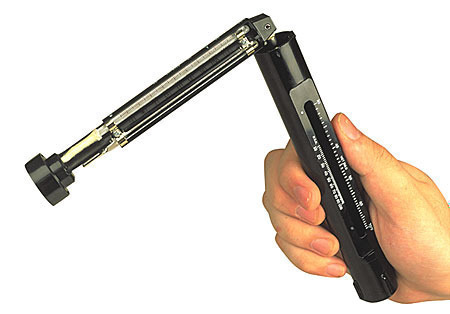A psychrometer is a type of hygrometer and is used exclusively to determine the relative humidity or moisture content in the air. Psychrometers represent an older humidity measurement form and electronic sensors that depend on changes in electrical resistance and capacitance rather than condensation temperature have widely replaced them. However, psychrometers are still found in many industrial environments and are available in both stationary and mobile versions.
How Psychrometers Work
Psychrometers consist of two thermometers, one dry and one wet. The wet thermometer is encased in a sock or cloth that has been saturated with distilled water. The idea is that the wet thermometer is always slightly colder than the dry thermometer due to evaporation. The two thermometers’ temperature readings are compared and the difference between them is used to calculate the relative humidity in the air.
Applications
Psychrometers measure the humidity in a general environment’s or specific area’s (such as a chamber or structure) air. Psychrometers are generally used in laboratory settings in order to determine precise measurements for experiments and chemical reactions. A stationary psychrometer is the most common and is used in some forms of industrial equipment, while a mobile psychrometer, known as a sling psychrometer, consists of two thermometers attached to a handle and is spun in the air for several minutes in order to calculate the relative humidity in the field.
Disadvantages
Psychrometers have several disadvantages. They must be perfectly calibrated in order to accurately determine the air’s relative humidity. This can be difficult due to ambient heat in the air. Fortunately, psychrometers that feature two metal tubes in which the thermometers are encased are available to counter this. These two tubes help to insulate the thermometers from ambient heat and are usually used in conjunction with a fan to moderate a constant air flow in between the tubes as well as in the inner tube that holds the thermometers. Freezing temperatures can affect psychrometers, in which case the wet thermometer develops a thin sheet of ice that makes it warmer than the dry thermometer. To counter this, psychrometers may be used in conjunction with an electric heater to ensure that the wet thermometer stays above freezing temperatures. However, despite these precautions, psychrometers are still very difficult to calibrate and may be off by as much as 2% to 5%.




Follow Us!